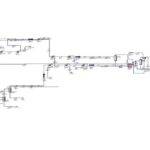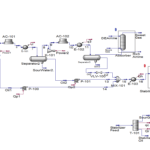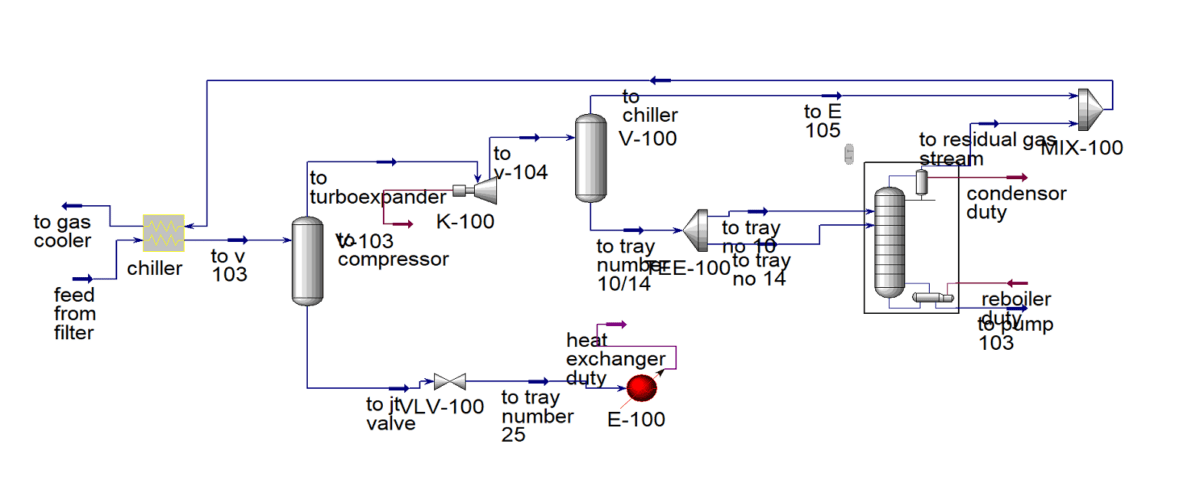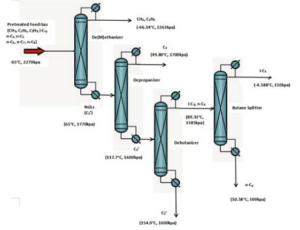Introduction
Natural gas is a flammable mixture of hydrocarbon gases, mainly methane and other gases such as ethane, propane, butane and pentane. Gas is the cleanest, safest and most important source of energy. Gas flaring is currently considered as a challenging energy and environmental problem, which causes economic losses and dangerous effects on the atmosphere.
Description of The Process
The feed gas was first cooled from 25 °C to -65 °C using a cooler to provide effective separation of vapor and liquid in the column. Then it was charged to the D (M) column of the ethanizer at 2270 kPa. Where methane and ethane were separated as the superior product at -66.34°C, NGLs separated as the base product at 94.87°C. The product is at 49.80 °C and 1700 kPa operating pressure, while butane flows from the bottom at 122.4 °C and 1769 kPa operating pressure.
C4 is charged from the separator to a pressure control valve to reduce the pressure from 1769 kPa to 1600 kPa, before it is charged to the separator. A separator with an operating pressure of 1600 kPa and a temperature of 117.7 °C separates C4 and C5 as top and bottom products, respectively.
Butane separates from the top at 89.32°C and 1585 kPa. while pentane flows from the bottom at 154.9°C and 1600 kPa. C4 was therefore charged from the separator to the butane split, where butane was separated into iso-butane at -4.588°C and 150 kPa and normal butane at 50.58°C and 500 kPa (as shown below).
Results
One of these products is liquefied petroleum gas (LPG), which is produced from the liquefaction of natural gas. which can be used as a source of energy. The obtained results show that the plant can recover 98.5% of LPG from the gas feed component. This is a big improvement on the 92% recovery in a conventional plant. The results of economic analysis show that this factory is economical and profitable. The simulation of stabilization of gas condensate is also done by the present company and is available on the website.
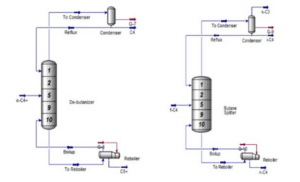
Conclusion
The plant has an effective recovery capacity of 98.5% of LPG content, resulting in high LPG production. While it gives flexibility to the product composition by separating the propane, isobutane and normal butane streams. Based on economic analysis, this factory is considered profitable and economical. LPG recovery from the burner gas system is an added value and can help reduce the amount of burner gas, thermal radiation, operation and maintenance costs, and air pollution.
Simulation of LPG Production From Flare Gas System
In this project, the production process of liquefied gas from the flare gas system is simulated in Aspen Hysys version 14 software.
